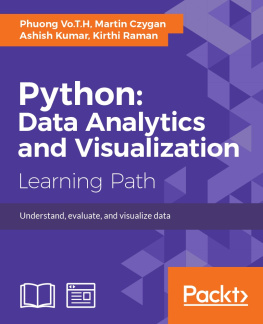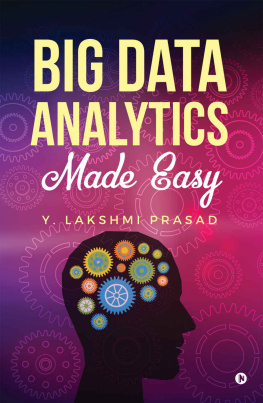Copyright 2021 - All rights reserved.
The content contained within this book may not be reproduced, duplicated, or transmitted without direct written permission from the author or the publisher.
Under no circumstances will any blame or legal responsibility be held against the publisher, or author, for any damages, reparation, or monetary loss due to the information contained within this book, either directly or indirectly.
Legal Notice:
This book is copyright protected. It is only for personal use. You cannot amend, distribute, sell, use, quote or paraphrase any part, or the content within this book, without the consent of the author or publisher.
Disclaimer Notice:
Please note the information contained within this document is for educational and entertainment purposes only. All effort has been executed to present accurate, up to date, reliable, complete information. No warranties of any kind are declared or implied. Readers acknowledge that the author is not engaging in the rendering of legal, financial, medical, or professional advice. The content within this book has been derived from various sources. Please consult a licensed professional before attempting any techniques outlined in this book.
By reading this document, the reader agrees that under no circumstances is the author responsible for any losses, direct or indirect, that are incurred as a result of the use of the information contained within this document, including, but not limited to, errors, omissions, or inaccuracies.
Table of Contents
A Comprehensive Beginners Guide
To Learn About The Realms Of Data Analytics From A-Z
Simple and Effective Tips and Tricks
to Learn Data Analytics Effectively
Advanced Guide to Learn the Realms
of Data Analytics Effectively
Data
Analytics
A Comprehensive Beginners Guide
To Learn About The Realms Of
Data Analytics From A-Z
Benjamin Smith
Introduction
Welcome to the Realms of Data Analytics!
If you believe that the modern environment generates even more data than the past decades, then you will agree with me that sometimes, it's not enough to retrieve data from the millennia for modern consumption. The rate of analytics required in todays growing world must be collected, evaluated, and quickly utilized for individual and business consumption.
Data has tremendous value opportunity: Groundbreaking perspectives, broader understanding of challenges, and innumerable possibilities to forecast, and perhaps even mold the future. Data analytics is the primary means of identifying and harnessing these abilities.
Data analytics offers strategies for dealing with and learning from Data - identifying trends, finding connections, and making sense of incredibly diverse images and knowledge. This book offers an insight into some of the main methods, strategies, and resources employed in Data analytics.
Learning these approaches will help readers become regular commentators to activities related to data analytics. The content of the book is intended to aid various interested parties like data analysts, as well as business-centric data analysts seeking to add Data analytics expertise to their asset base.
To be frank, until now, the field of data analytics has been occupied by some so-called data analytics gurus who seem to address the subject in a way that is excessively overly verbose and intimidating. Hey! Basic data analytics is not that complicated or hard to comprehend, as most people believe it is. Here is the good news if you are reading this, you are a step ahead into learning the essentials of data analytics.
This book serves as a quick-start guide that will walk you through the massive and diverse fields of data analytics. If you are entirely new to the world of data analytics, this book is for you. So buddy, why not allow me to walk you into the realms of data analytics!
Chapter 1
Working with Data
As we delve deeper into the digital age, we ultimately find ourselves in a world that is profoundly data-rich and data-aligned. All activities performed by an organization today are determined in one way or the other by data and analytics. Most businesses have started the incorporation of advanced analytical methods into potential business growth areas, to simplify operations, boost operational margins, make smarter judgments about human resources, and design efficient budgets. The impact of data extends into our daily lives, Medicare, the economy, and more.
Although the book's major focus is on data analytics, understanding the fundamentals and the first key words of data analytics is a must.
The first chapter of this book takes a broad look at data as well as other essential factors connected to it. Understanding this essential component of data analytics serves as an entry point into the world of data analytics.
Defining Data
The first step towards the use of data analytics as useful choice-making support is to grasp the workings of data fully, how it is obtained, stored, the various types of data and their attributes.
When evidence, detail, and more specifically, information is in "raw" and "disorganized" form, it is referred to as data. These data are often evaluated, while useful evidence is obtained from them.
When we hear that word "data," many of us automatically envisage spreadsheets and tables. Hey! Data is not in any way limited to figures. Most data obtained in today's world is as diverse and complex as Facebook likes and even the location reported by your mobile device. Data can be numerical, txt-based, sound, or visual, and the volume of data that humans are now collecting is a drastic increase from just a few years ago.
Understanding Various Data Types and Structures
As stated earlier, data can come in various variants, like structured and unstructured data. These data structures may include financial data, multimedia files, and genetic mappings. In contrast to the conventional data analysis carried out by companies, most of today's Data is unstructured or semi-structured, requiring different techniques and tools to be interpreted and analyzed. Distributed computing environments and massively parallel processing (MPP) frameworks that allow multi-threaded data intake and Analysis are the preferred approaches to the Analysis of these large data sets.
With all this in mind, this section takes a good look at the two common data structures (structured and unstructured data) that are commonly used during data analytics processes.
Structured Data
For tech nerds and developers, structured data may appear boring for data analytics processes. This data structure adheres to a predefined data model; thus, they are easy to analyze. Structured data adheres to the table format - the relationship between rows and columns. Excel files or SQL databases are two prominent examples of structured data. Both (excel files and SQL databases) consists of structured rows and columns which can be easily ordered and categorized.















